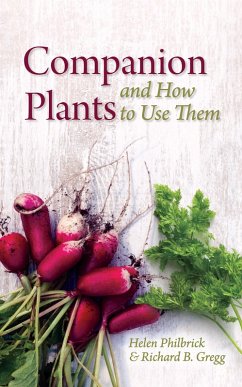It has long been observed, by farmers, gardeners and botanists alike, that from time to time certain plants seem to affect certain other plants growing their near them - both favourably and unfavourably. By taking account of these relationships, farmers and gardeners can improve the quality of food and flowers, reduce losses from pests and disease, drought and frost, and enhance both satisfaction and pleasure in their work and financial profit. Years of experimentation by Richard Gregg and subsequently Helen Philbrick and others resulted in this unique reference book. It offers a detailed and comprehensive A-Z of plants and how they affect each other and their surrounding environment, including the soil, insects and birds.
Dieser Download kann aus rechtlichen Gründen nur mit Rechnungsadresse in A, D ausgeliefert werden.


